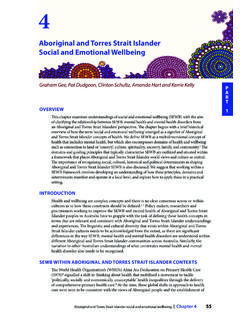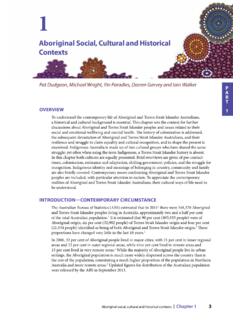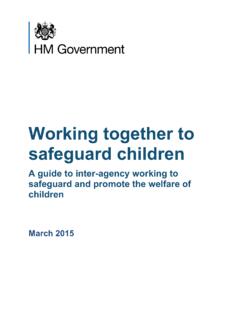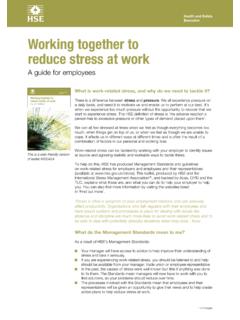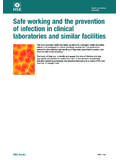Transcription of Communicating and Engaging with Diverse Communities
1 Communicating and Engaging with Diverse Communities | Chapter 15257P A R T 3 Pat Dudgeon and Karen UgleCommunicating and Engaging with Diverse Communities15 OVERVIEWThis chapter focuses on the skills and understanding required for Communicating and Engaging effectively with Aboriginal people in Diverse contexts, with particular attention to the urban setting. We briefly discuss concepts of community and culture, such as kinship affiliations, community obligations and values of Aboriginal work of the late psychiatrist, Mark Sheldon, has been influential in establishing communication and engagement strategies for mental health practitioners working in remote Communities , is briefly covered.
2 In addition, protocols for Communicating and Engaging with Torres Strait Islander people are included. Importantly, the various strategies discussed here are in accord with the National Practice Standards for the Mental health Workforce 20131 and highlight the need for recognition and respect of cultural difference for all Aboriginal people come from a variety of different cultural and personal backgrounds and histories. Aboriginal people living in urban contexts may not display stereotypical images of what people look like or live like; however, urban identity is very strong and there is greater diversity than is often realised.
3 Similarly, the diversity among people living in remote Communities is often disguised by stereotypical and simplistic images and ideas which do not reflect the nuances and complexities of people s lives and identities in these Communities . Practitioners need to have an awareness of the diversity of backgrounds, experiences and histories of different Communities in order to work effectively with clients and their families. Although more than half of the Aboriginal population live in urban and regional centres, most guidelines and assessment commentaries tend to focus on the health , mental health and social issues of remote Communities .
4 The highest proportion of Aboriginal (34 per cent) and non-Aboriginal (71 per cent) people live in the major cities of Australia, although Aboriginal people are to live in remote areas than other Australians. More than one-in-five Aboriginal persons were living in regions classified as either remote or very remote in 2011; the same was true of only per cent of non-Aboriginal people. This remoteness profile varies markedly by State and Territory in the Northern Territory, for example, 80 per cent of Aboriginal people live in a remote or very remote setting, whereas practically the entire population of Aboriginal people in Victoria, Tasmania and the Australian Capital Territory were in either regional areas or a major c it working together | Aboriginal and Torres Strait Islander mental health and wellbeing principles and practice258 While the largest numbers of Aboriginal people are living in major cities.
5 They account for a relatively small proportion of the total population in these areas per cent of the total population in major cities in 2011. Further, Aboriginal people make up per cent of regional Australia and 13 per cent of the population of remote areas, but constitute over 40 per cent of very remote COMMUNITIESThe term community was initially an imposed idea for the purpose of control over and management of the Aboriginal populations. As part of the history of colonisation, people were dislocated into reserves and missions. As discussed in Chapter 1 (Dudgeon and colleagues), this included disruption to people s social, political and religious life; and the relocation of distinct groups from different areas.
6 Early constructions of community did not recognise language and social and spiritual differences between groups. Today, Aboriginal community groups vary considerably in their economic, social and geographic circumstances. The National Aboriginal Education Committee (NAEC)3 developed a model of Aboriginal societies that included four broad categories of the community: traditionally oriented, rural non-traditional, urban and urban-dispersed Communities . The following definition remains relevant today: In the main, Aboriginal society is structured around the community. There exist very strong kinship ties within each of the Communities and within each of the categories.
7 These kinship ties overlap the various categories thus forming very strong relationships among all Aboriginal people of this (p10) Aboriginal Perceptions of CommunityThe defining characteristics of Aboriginal perceptions of community are primarily based on family relationships, involving a sense of belonging along family lines and country or area of origin. Aboriginal perceptions of belonging to a community can be both physical and psychological, based on shared interest or shared location. For some groups, the concept may also hold a political and abstract dimension an understanding of the entire cultural group of Aboriginal people working against oppression and towards self-determination.
8 This concept of community is often used by those who are in leadership positions and representing Aboriginal interests. Community can also be a broad and fluid concept, uniquely shared by people and by those that work in the IN URBAN CONTEXTSC ontemporary Communities are dynamic and flexible, including many family and political networks and affiliations. Members of these Communities will have various responsibilities and obligations that confirm and reinforce their membership. These responsibilities may include: zbeing seen to be involved and active within the community; zsupporting community activities; zobligations to family; za sense of responsibility or commitment to use one s skills for the benefit of the community; zaffiliations to family, and broader kin relations (families become connected through marriage); zaffiliations to factions/sectors within the community (family, work, language group, country of origin, politics); andCommunicating and Engaging with Diverse Communities | Chapter 15259P A R T 3 zaffiliations to particular organisations.
9 Often, members of the community associate the em-ployee with a particular organisation and this may become part of the individual s identity and even carry over to social are also many layers of politics that practitioners may need to be aware of especially when drawing in other workers. Examples of this are representation, that is, who should speak and on what matters, and recognising that at times Aboriginal and Torres Strait Islander peoples themselves can be both insiders and outsiders , depending on the issue at Diversity Urban diversity is an important consideration when working with Aboriginal and Torres Strait Islander peoples who come from a variety of different cultural and personal backgrounds and histories.
10 The term urban refers to people living in cities or large towns where they are distinctly a minority group and more invisible than Aboriginal people living in country towns and remote Communities . They may also move in and out of urban situations (unless it is their country), and may have experienced a longer and more intense history of people living in urban settings within their different forms of groupings may not be highly visible in the urban situation. It is not as easy to see parts of the community as it is in more remote areas, and it is sometimes more difficult to locate or find people. Yet urban Aboriginal people s identity, including their cultural connections and ties to country and family, can be very strong.

